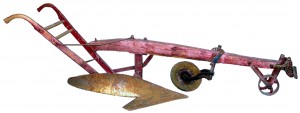The Land
“The earth is the mother of us all – plants, animals, and men. The soil requires a duty of man which we have been slow to recognize.” — Secretary of Agriculture Henry A. Wallace, in his 1938 ‘Declaration of Dependence’
Nothing characterizes the Plains more than the relationship between people and the land. Possessed of a stark and under-stated beauty, millions of acres of prairie have been broken to make way for often-precarious farming operations. A surprisingly fragile environment when the topsoil has been disturbed, the Plains have not always responded well to insensitive and indiscriminate development attempts. This was illustrated dramatically in the great dust storms of the 1930s, some of which darkened skies on the East Coast (and helped inspire the quote above).
Some say the Plains should never have been settled, believing them to be too unpredictable in both climate and economics to sustain soil-based livelihoods. Some go so far as to advocate abandoning much of the middle of this continent, returning it to its previous owners, the buffalo and the deer.
But clocks – much less calendars – can’t be turned back. Many who live here today have roots that run for generations, and like the Native Americans who clung so tenaciously to this ground in the face of white settlement, are loath to let go and be blown away.
Roots run so deep on the prairie that often Native American farmers had to turn the soil back from places where runoff had already cut through the roots in order to plant crops. White pioneers had to use special plows to cut through it, and found the roots so strong that houses made of sod were routinely constructed.
Today, where once the goal of Plains inhabitants was to plow under the prairie sod, more and more people are working to restore native grasses and increase biodiversity. They also seek to preserve places of environmental and historical significance to help current and future generations better understand the land around them and develop a stronger sense of place.
